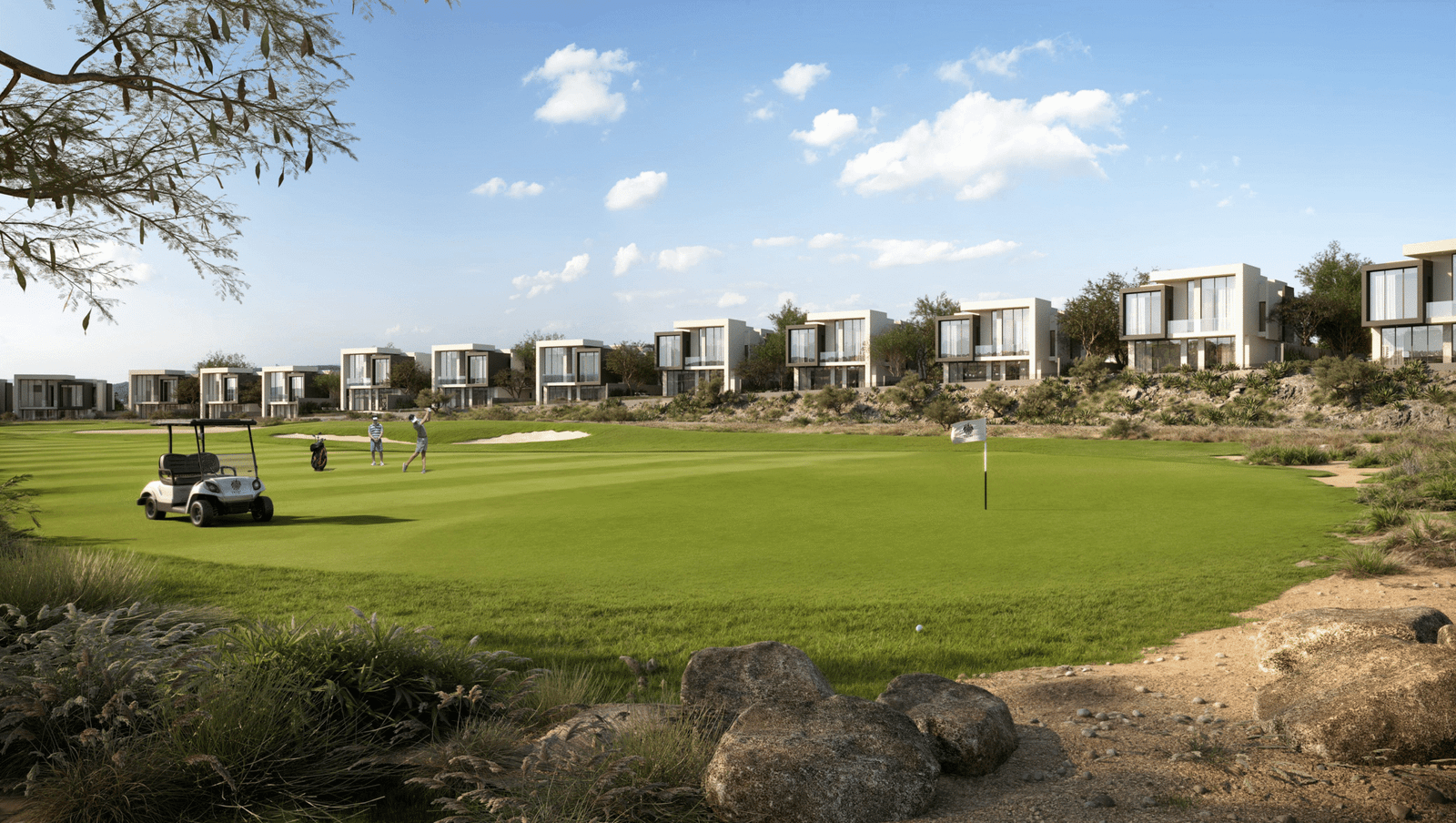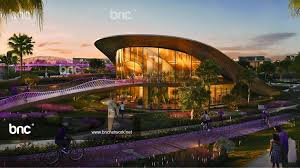Now Reading: Palm Jebel Ali’s Comeback: Dubai’s Next Island Living Destination
-
01
Palm Jebel Ali’s Comeback: Dubai’s Next Island Living Destination
Palm Jebel Ali’s Comeback: Dubai’s Next Island Living Destination
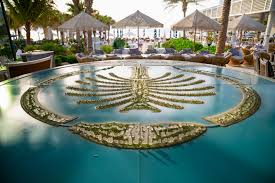
Table of Contents
Picture yourself stepping out of a luxurious villa, the morning breeze carrying the scent of the Arabian Gulf as your smart home adjusts the lighting to frame a private beach. You sip coffee on a terrace overlooking a shimmering lagoon, planning a day at an exclusive marina or a waterfront spa, all within your island paradise. In 2025, Palm Jebel Ali is staging a spectacular comeback, emerging as Dubai’s next island living destination with a blend of opulent residences and cutting-edge amenities.
This revival fuels a real estate boom with 96,000 transactions worth $87 billion in the first half, 58% driven by buyers from the UK, India, Russia, and China. Offering 100% freehold ownership, a dirham pegged to the U.S. dollar, and no personal income tax, capital gains tax, or annual property taxes, Palm Jebel Ali delivers 6-8% rental yields and 10-15% price appreciation, outpacing London (2-4%) and New York (2-3%). Properties over $545,000 qualify for a 10-year Golden Visa, while smaller units grant 2-year residency.
Powered by 25 million tourists and a 4% population surge, this island combines bespoke design, elite facilities, and coastal serenity to create homes that are as lucrative as they are breathtaking. Navigating fees, VAT, and 2025 regulations is key to securing your place in this radiant island haven.
Why Palm Jebel Ali Is Rising Again
Located 30 minutes from Dubai International Airport via Sheikh Zayed Road or private water taxis, Palm Jebel Ali is redefining luxury with its palm-shaped fronds, private beaches, and proximity to Dubai’s skyline. Boasting vacancy rates of 1-2%, compared to 7-10% globally, it attracts global elites with its exclusivity. You keep 100% of rental income $180,000-$600,000 annually on $3 million-$10 million properties versus $99,000-$360,000 elsewhere after taxes.
Zero capital gains tax saves $60,000-$600,000 on $300,000-$3 million profits, and no property taxes save $30,000-$100,000 yearly, unlike London’s council tax (up to 2%) or New York’s property tax (1-2%). Residential purchases skip 5% VAT ($150,000-$500,000), and the Golden Visa adds residency allure. With private jetties, wellness hubs, and views of landmarks like Burj Al Arab, Palm Jebel Ali achieves 10-15% price growth, driven by its revived prestige and billionaire demand, making it Dubai’s next island living icon.
Living here feels like embracing a vibrant, coastal dream.
No Personal Income Tax: Rentals That Build Wealth
Palm Jebel Ali imposes no personal income tax, letting you keep every dirham, unlike the U.S. (up to 37%) or UK (up to 45%). A $3 million villa yields $180,000-$240,000, saving $81,000-$108,000; a $10 million estate yields $450,000-$600,000, saving $202,500-$270,000. Short-term rentals, fueled by 25 million tourists flocking to the island’s marinas and entertainment hubs, require a DTCM license ($408-$816), boosting yields by 10-15% ($18,000-$90,000).
Long-term leases, popular with affluent families seeking coastal exclusivity, need Ejari registration ($54-$136) for stability. Non-compliance risks fines up to $13,612, so licensing is essential. Smart home systems, like AI-driven security and concierge apps, enhance rental appeal, aligning with the island’s luxurious vision.
Tax-free rentals feel like a golden tide of prosperity.
Zero Capital Gains Tax: Profits That Soar
These properties offer zero capital gains tax, letting you keep 100% of sale profits. Selling a $3 million villa for $3.6 million (20% appreciation) yields a $600,000 tax-free profit, saving $120,000-$168,000 versus London (20-28%) or New York (20-37%). A $10 million estate sold for $12 million delivers a $2 million tax-free gain, saving $400,000-$560,000. With 10-15% price growth driven by limited plots and global demand, Palm Jebel Ali outperforms international markets, where similar properties rarely exceed $8 million. A 4% DLD fee ($120,000-$400,000), often split, applies, but tax-free profits make these homes wealth-building engines of Dubai’s island revival.
Keeping every dirham feels like a radiant financial triumph.
No Annual Property Taxes: Ownership That Feels Light
Unlike global markets, these properties have no annual property taxes, saving $30,000-$100,000 yearly on $3 million-$10 million homes compared to London’s council tax ($60,000-$200,000) or New York’s property tax (1-2%). Maintenance fees ($20,000-$50,000) cover private beaches, infinity pools, and 24/7 concierge, aligning with global ultra-luxury standards. A 5% municipality fee on rentals ($9,000-$30,000) applies, reasonable for this prime location. These low costs make ownership sustainable, supporting a lifestyle that feels effortless and regal, perfectly suited to Palm Jebel Ali’s comeback.
No property taxes feel like a warm breeze lifting your investment.
VAT Rules: A Savvy Investor’s Edge
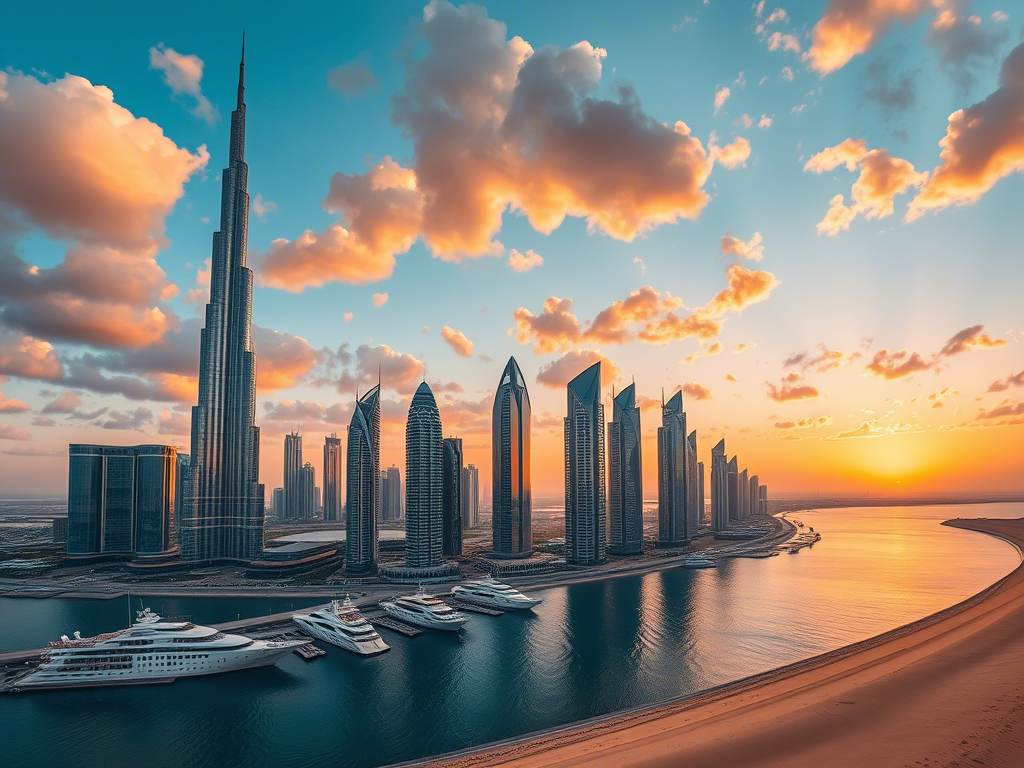
Residential purchases skip 5% VAT, saving $150,000-$500,000 on $3 million-$10 million properties, unlike commercial properties or the UK’s stamp duty (up to 12%, or $360,000-$1.2 million). Off-plan purchases, a hallmark of Palm Jebel Ali’s revival, incur 5% VAT on developer fees ($30,000-$100,000), recoverable via Federal Tax Authority (FTA) registration ($500-$1,000). Short-term rental operators must register for VAT if revenue exceeds $102,041, charging 5% but claiming credits on DTCM fees ($408-$816). A $3 million villa yielding $180,000-$240,000 incurs $9,000-$12,000 in VAT, with $1,500-$2,000 in credits; a $10 million estate yielding $450,000-$600,000 incurs $22,500-$30,000 in VAT, with $2,000-$3,000 in credits. Non-compliance risks fines up to $13,612, so meticulous records are crucial for thriving in this island paradise.
VAT exemptions feel like a clever boost to your savings.
DLD Fees and Title Deeds: Securing Your Island Haven
The 4% DLD fee, typically split, applies: $120,000 for a $3 million villa or $400,000 for a $10 million estate. Gift transfers to family or shareholders reduce DLD to 0.125%, saving $116,250-$387,500. For instance, gifting a $10 million estate slashes DLD from $400,000 to $12,500. Title deed issuance costs $136-$272, requiring DLD registration. Broker fees, typically 2% ($60,000-$200,000), may be waived for off-plan projects like Palm Jebel Ali’s new villas. Mortgage registration (0.25% of the loan, or $7,500-$25,000) and valuation fees ($680-$1,360) apply for financed deals. The 2025 Oqood system ensures escrow compliance for off-plan purchases, protecting your investment in this exclusive island.
Title deeds feel like the key to your coastal sanctuary.
Corporate Tax: A Business Buyer’s Note
Introduced in 2023, the 9% corporate tax applies to businesses with profits over $102,110. A company leasing a $3 million villa yielding $180,000-$240,000 faces a 9% tax ($16,200-$21,600), reducing net income to $163,800-$218,400. A $10 million estate yielding $450,000-$600,000 incurs $40,500-$54,000 in tax. Qualified Free Zone Person (QFZP) status in areas like Dubai Multi Commodities Centre (DMCC) avoids this, saving $16,200-$54,000, with setup costs of $2,000-$5,000. Small business relief waives corporate tax for revenues under $816,000 until December 31, 2026. Individual ownership skips this tax, ideal for most buyers targeting Palm Jebel Ali.
Corporate tax feels like a gentle ripple you can navigate.
New Tax Rules for 2025
The Domestic Minimum Top-up Tax (DMTT), effective January 1, 2025, imposes a 15% tax on multinationals with revenues over €750 million ($793 million). Individual investors and smaller entities are unaffected, and QFZP status avoids DMTT, saving $16,200-$90,000. Cabinet Decision No. 34 refines Qualifying Investment Fund (QIF) rules, exempting corporate tax if real estate income is below 10%. A QIF earning $1 million, with $100,000 from rentals, faces 9% tax ($8,100) on 90% ($900,000). A July 2025 policy allows corporate tax deductions on fair market value depreciation, saving $5,455-$18,182 annually for a $3 million villa revalued at $3.6 million. These rules enhance the allure of Palm Jebel Ali’s comeback.
New tax rules feel like a puzzle with prosperous solutions.
Palm Jebel Ali’s Revival: A Closer Look
Unmatched Coastal Luxury
Palm Jebel Ali ($3 million-$10 million) offers 6-8% yields and 10-15% price growth, featuring villas with private beaches, marinas, and skyline views. A $3 million villa yields $180,000-$240,000 tax-free, saving $81,000-$108,000. Selling for $3.6 million yields a $600,000 tax-free profit, saving $120,000-$168,000. No property taxes save $30,000-$100,000, and VAT exemption saves $150,000-$500,000. Maintenance fees are $20,000-$50,000, with a 5% municipality fee ($9,000-$12,000). QFZP saves $16,200-$21,600. U.S. investors deduct depreciation ($54,545-$181,818), saving up to $63,636. Its seven fronds, twice the size of Palm Jumeirah, offer 30% more waterfront, hosting entertainment hubs, retail, and 80+ amenities, including eco-parks and wellness spas, drawing global elites.
Palm Jebel Ali feels like a radiant island masterpiece.
Strategic Location and Connectivity
Positioned 20% closer to Dubai’s urban core than other islands, Palm Jebel Ali connects seamlessly via water taxis and Sheikh Zayed Road, with Al Maktoum Airport 25 minutes away. Its 13.4 km of beachfront and 6 marinas enhance its appeal, with 85-90% occupancy driven by tourists and expatriates. The island’s master plan includes smart infrastructure, like AI-driven traffic systems and solar-powered utilities, aligning with Dubai’s 2040 Urban Master Plan. This connectivity and innovation make it a magnet for billionaire buyers seeking both seclusion and accessibility.
Living here feels like a perfect blend of serenity and vibrancy.
Elite Amenities and Lifestyle
Palm Jebel Ali offers private jetties, infinity pools, and exclusive clubs, alongside cultural hubs with art installations and waterfront dining inspired by Emirati heritage. Smart home features, like voice-activated climate control and security drones, elevate the experience. Community events, from yacht races to beachfront concerts, foster a sense of belonging for high-net-worth residents. The island’s eco-conscious design, with 30% green spaces and energy-efficient systems, appeals to sustainability-focused investors, while its proximity to Dubai’s financial hubs attracts professionals.
This lifestyle feels like a vibrant, elite escape.
Why Palm Jebel Ali Shines
Price Range: $3 million-$10 million, targeting high-end and ultra-elite buyers.
Rental Yields: 6-8%, with short-term rentals at 6-8% and long-term at 5-7%.
Price Appreciation: 10-15%, driven by exclusivity and global demand.
Lifestyle: Private beaches, marinas, and smart tech create opulent living.
Amenities: Infinity pools, wellness hubs, and cultural venues enhance allure.
ROI Verdict: 8-12% ROI, blending luxury with stellar returns.
Living here feels like embracing a radiant, island legacy.
Strategies to Maximize Returns
For individuals: Hold properties personally to avoid corporate taxes, saving $16,200-$54,000. Negotiate DLD fee splits, saving $60,000-$200,000. Use gift transfers to reduce DLD to 0.125%, saving $116,250-$387,500. Recover 5% VAT on developer fees via FTA registration ($500-$1,000). Leverage double taxation treaties with 130+ countries, saving $81,000-$270,000. U.S. investors deduct depreciation ($54,545-$181,818), saving up to $63,636. For corporates: Secure QFZP status, keep QIF income below 10%, and claim depreciation deductions. Hire property managers ($20,000-$50,000 annually) and tax professionals ($1,000-$3,000) to avoid fines up to $136,125. Focus on short-term rentals for tourist demand, long-term for stable income.
These strategies feel like a treasure map to your coastal wealth.
Risks to Watch in 2025
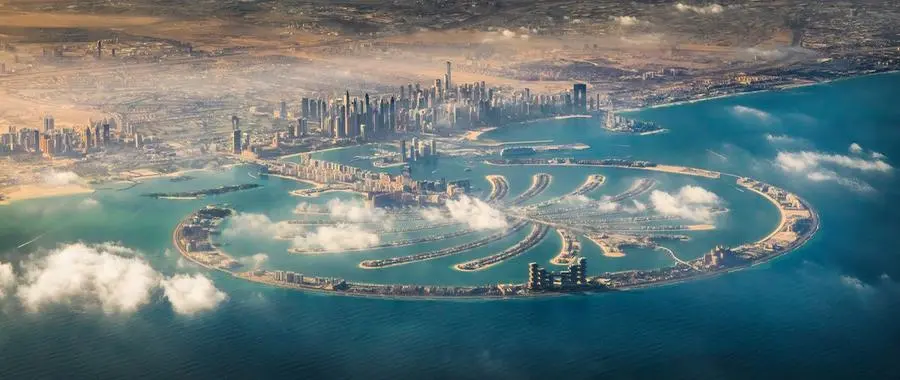
A projected oversupply of 182,000 units by 2026 may slightly slow price growth in newer island projects, but Palm Jebel Ali’s unique scale and prestige ensure resilience. Off-plan delays risk setbacks, so choose trusted developers like Nakheel and verify escrow compliance via the 2025 Oqood system. Non-compliance with VAT or DTCM rules risks fines up to $13,612, and corporate tax errors can cost $136,125. Indian investors must report properties in India’s Foreign Asset schedule to avoid $135,000 penalties. Currency fluctuations, like a 5% dirham shift, could impact returns.
Why Palm Jebel Ali Is Worth It
Palm Jebel Ali’s comeback offers 8-12% ROI, 10-15% growth, and tax-free savings of $30,000-$560,000 annually. With Golden Visa perks, 85-90% rental occupancy, and a lifestyle blending private beaches with smart luxury, it’s Dubai’s next island living destination in 2025. Navigate fees, secure your coastal haven, and invest in Dubai’s radiant future.
read more: New Dubai Golf Communities Offering Luxury Villas and Elite Amenities



